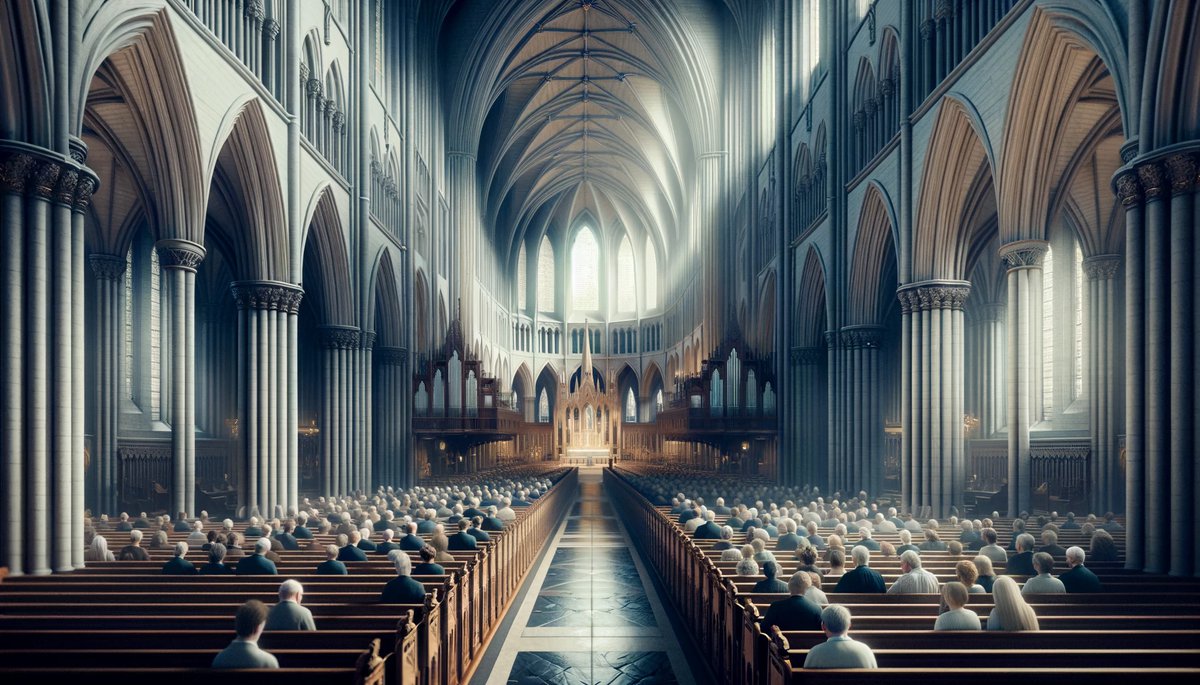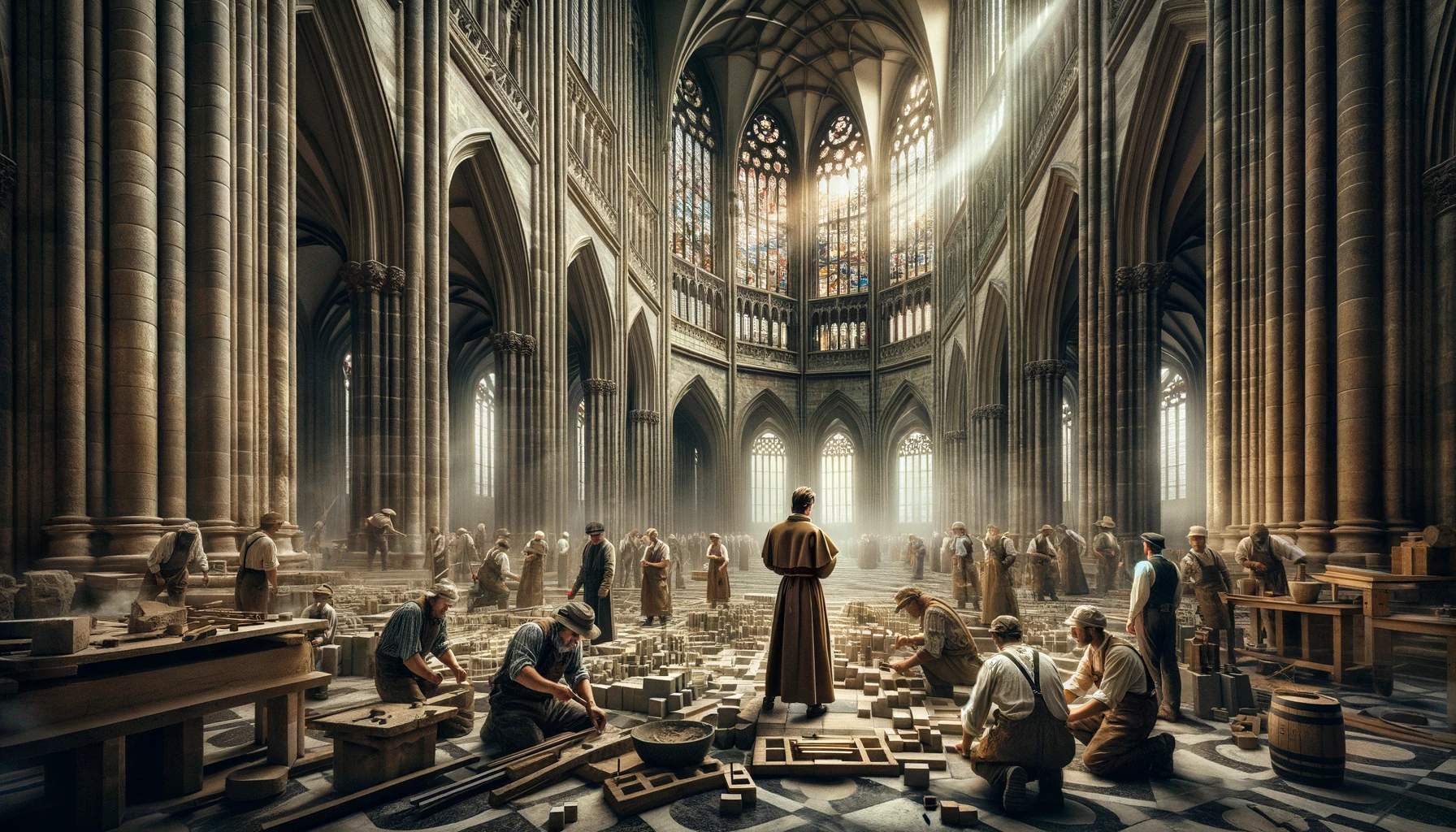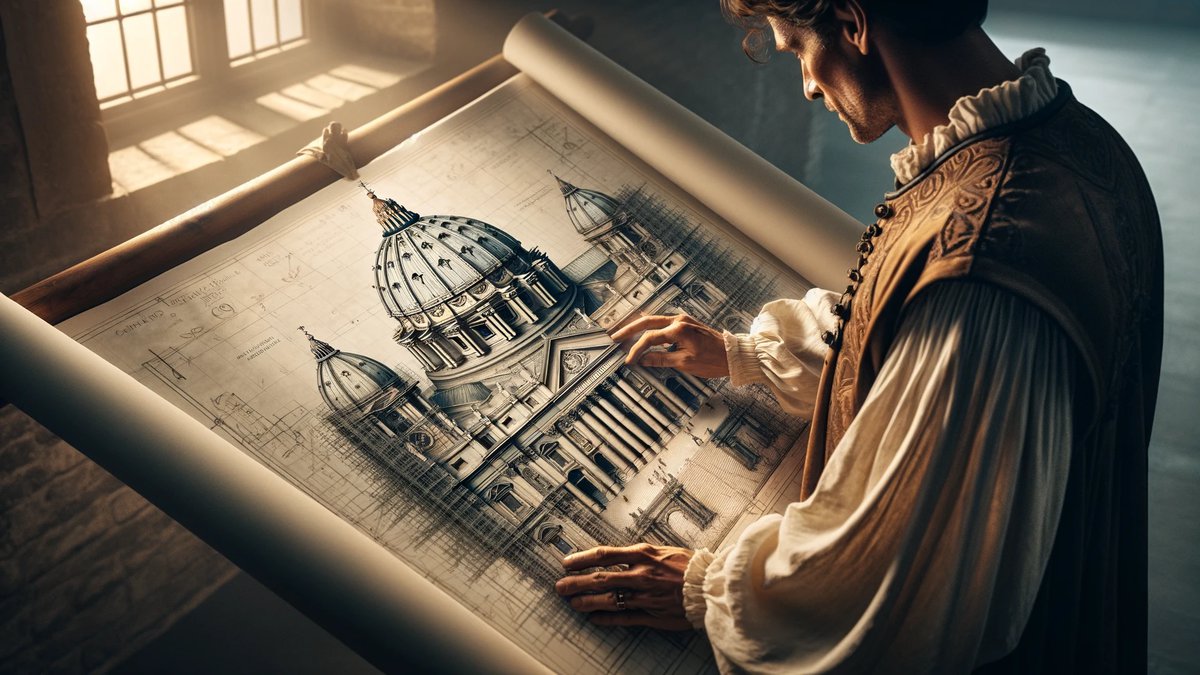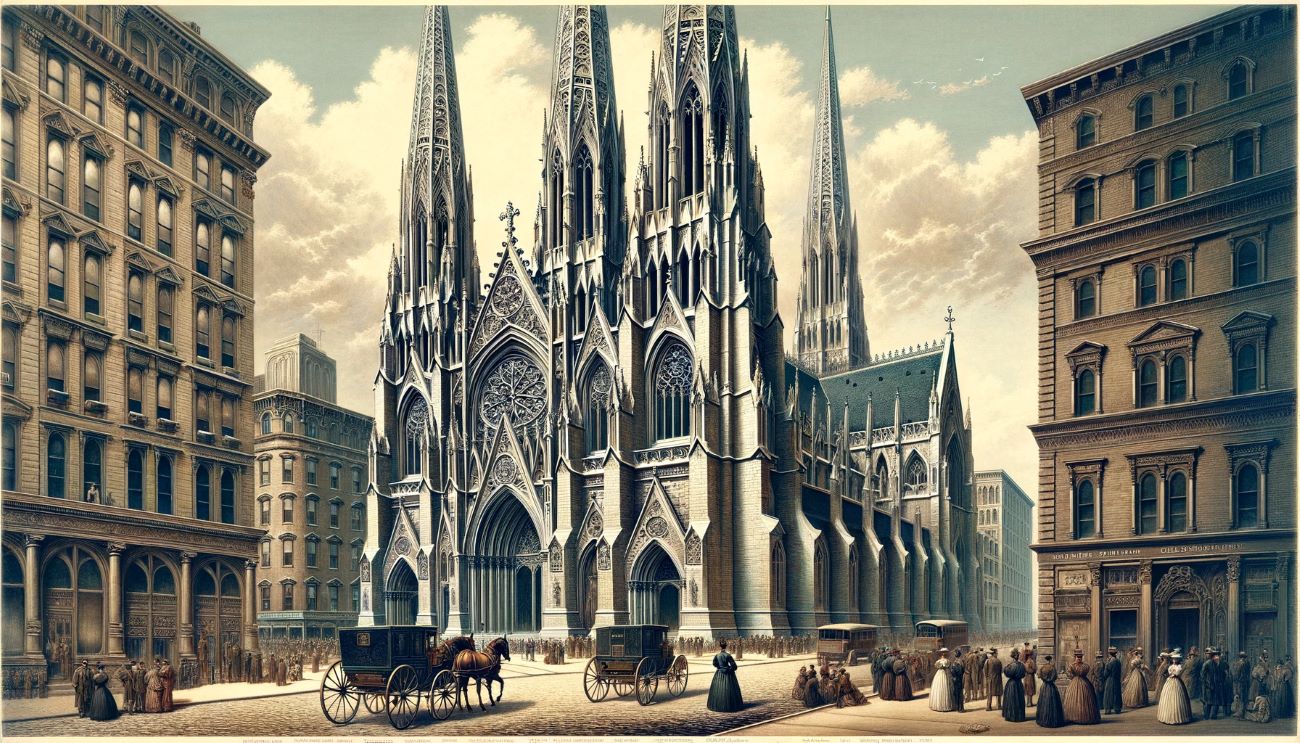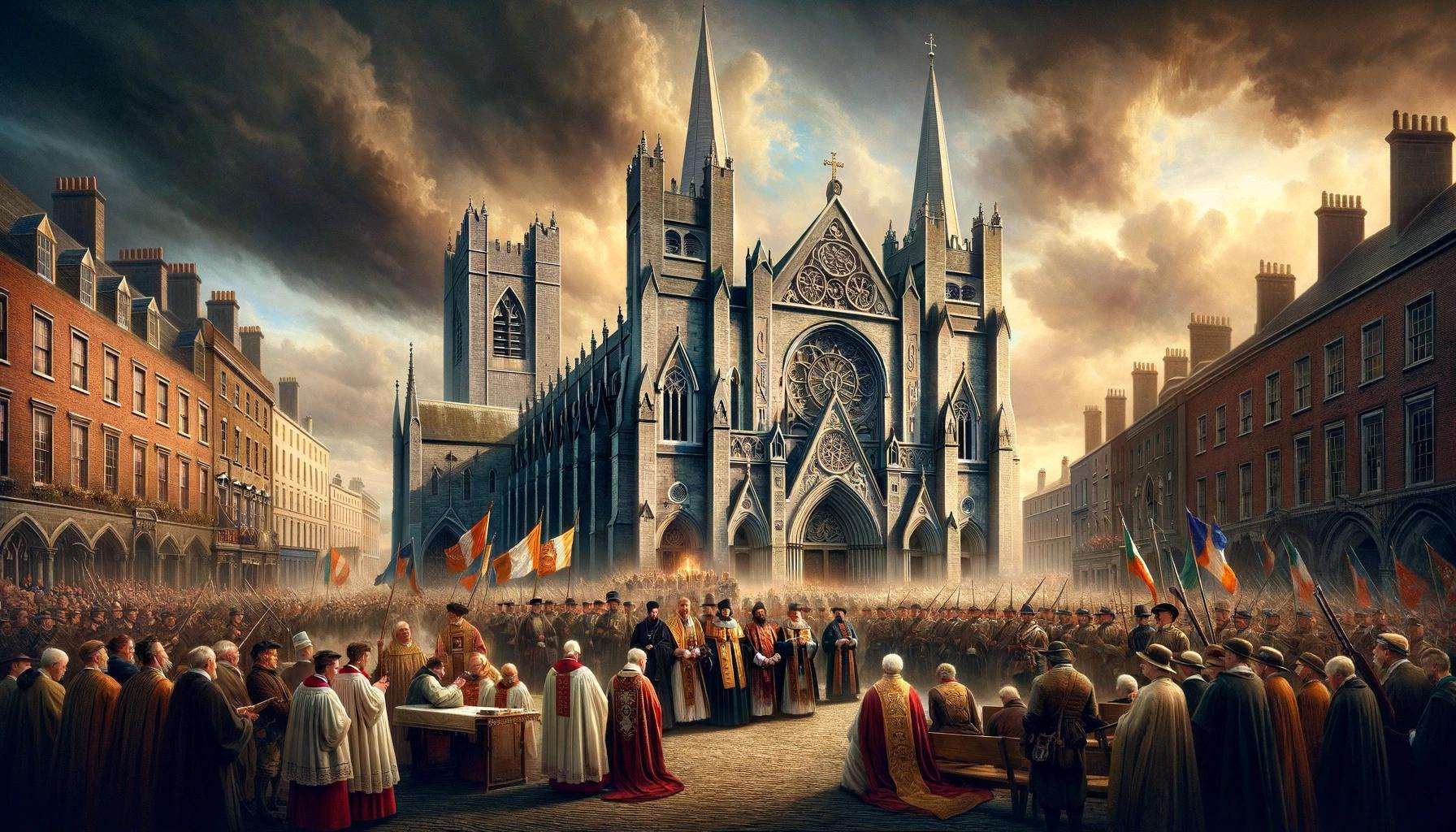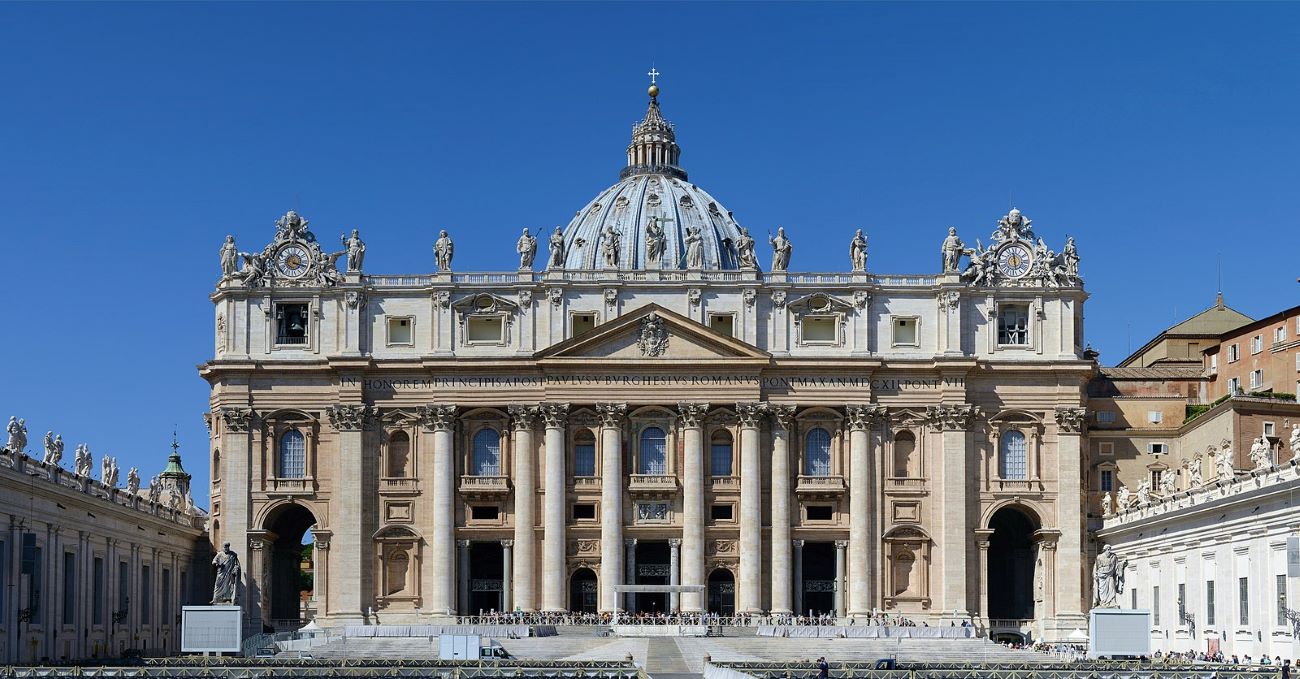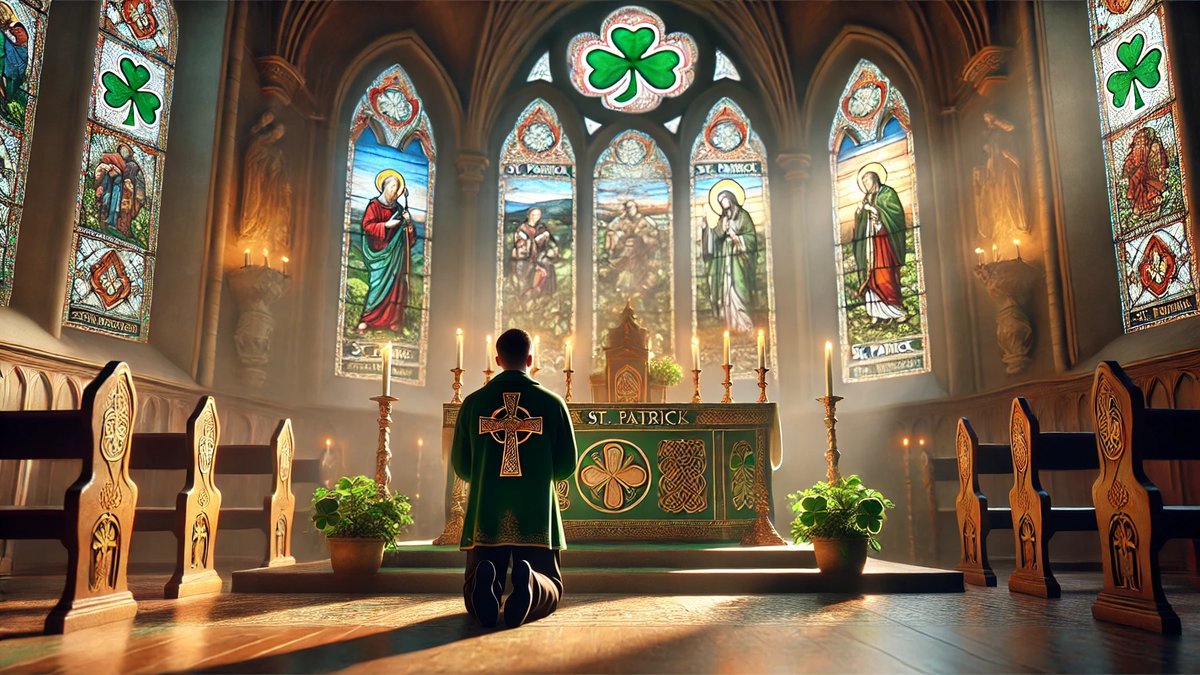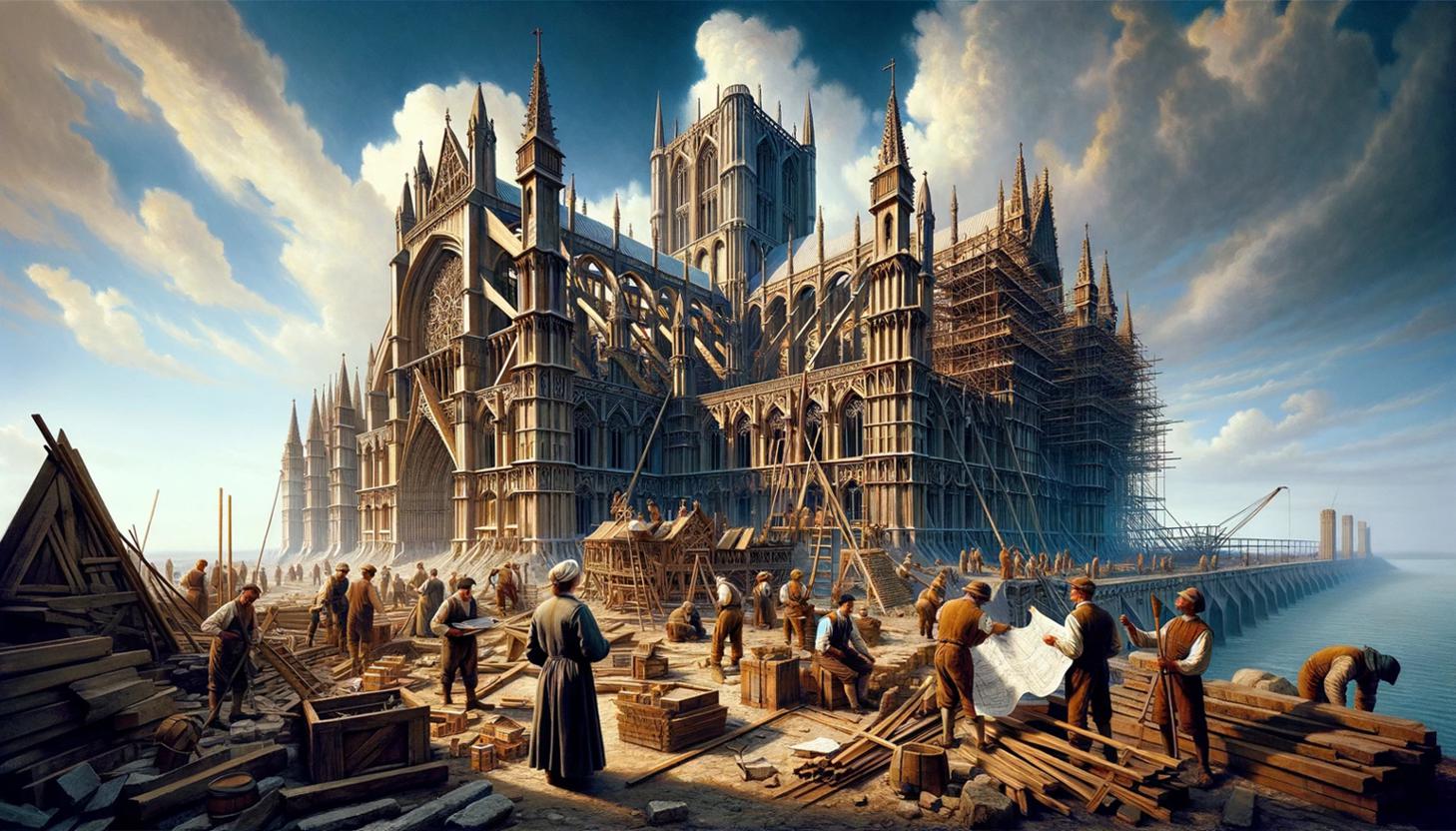Home>Arts and Culture>Who Built St. Patrick’s Cathedral NYC


Arts and Culture
Who Built St. Patrick’s Cathedral NYC
Published: February 16, 2024
Ericka Andersen, an editor at Christian.net, expertly merges digital strategy with content creation, focusing on faith and societal issues. Her communication skills enhance the platform's engaging narratives, fostering meaningful dialogue on belief's impact on society.
Discover the history and architecture of St. Patrick's Cathedral in NYC, a masterpiece of arts and culture. Learn about the visionaries behind its construction.
(Many of the links in this article redirect to a specific reviewed product. Your purchase of these products through affiliate links helps to generate commission for Christian.net, at no extra cost. Learn more)
Table of Contents
Introduction
St. Patrick's Cathedral stands as a majestic symbol of faith, history, and architectural brilliance in the heart of New York City. This iconic structure, with its awe-inspiring spires and intricate Gothic Revival design, has captivated the hearts and minds of visitors for generations. As one of the most renowned religious landmarks in the United States, St. Patrick's Cathedral holds a significant place in the cultural tapestry of New York City and the nation as a whole.
The cathedral's rich history and architectural grandeur draw countless visitors each year, offering a glimpse into the intersection of art, culture, and spirituality. From its humble beginnings to its enduring legacy, the story of St. Patrick's Cathedral is a testament to the enduring power of human creativity and devotion.
As we delve into the history and construction of this magnificent edifice, we will uncover the remarkable tale of how St. Patrick's Cathedral came to be, the visionaries who brought it to life, and the enduring impact it has had on the city and its inhabitants. Join us on a journey through time and artistry as we explore the captivating narrative of St. Patrick's Cathedral, a testament to the enduring spirit of faith and ingenuity.
Read more: When Was St. Patrick Cathedral NYC Built
The Early History of St. Patrick's Cathedral
In order to truly appreciate the significance of St. Patrick's Cathedral, it is essential to delve into its early history. The origins of this architectural marvel can be traced back to the 19th century, a time of great transformation and growth for New York City. The need for a grand cathedral to serve the burgeoning Catholic population became increasingly apparent as the city continued to expand.
The seeds of St. Patrick's Cathedral were sown in 1850 when Archbishop John Joseph Hughes, a visionary leader known for his ambitious undertakings, proposed the construction of a new cathedral to replace the modest St. Patrick's Old Cathedral in Lower Manhattan. The site chosen for this ambitious project was a piece of land situated on Fifth Avenue, then considered to be on the outskirts of the city.
The architectural firm of James Renwick Jr., renowned for its innovative designs, was commissioned to create a cathedral that would stand as a testament to the growing influence of the Catholic Church in America. Renwick's vision for the cathedral was inspired by the Gothic Revival style, a nod to the grand cathedrals of Europe and a reflection of the aspirations of the American Catholic community.
However, the construction of the cathedral faced numerous challenges, including the outbreak of the Civil War, which disrupted the flow of resources and labor. Despite these obstacles, the foundation stone was laid on August 15, 1858, marking the official commencement of the cathedral's construction.
The early years of construction were marked by perseverance and determination, as the cathedral gradually began to take shape amidst the bustling backdrop of New York City. The dedication and unwavering commitment of the architects, builders, and the Catholic community at large were instrumental in bringing Archbishop Hughes' vision to fruition.
As the cathedral rose skyward, it became a symbol of hope and resilience, embodying the aspirations of a growing city and its people. The early history of St. Patrick's Cathedral is a testament to the enduring spirit of faith, perseverance, and the unyielding determination to create something truly extraordinary.
The cathedral's journey from conception to realization is a testament to the unwavering dedication of those who believed in its profound significance. It stands as a living testament to the enduring legacy of faith, artistry, and the human spirit, a beacon of inspiration for generations to come.
The Construction of St. Patrick's Cathedral
The construction of St. Patrick's Cathedral was a monumental undertaking that spanned decades, marked by unwavering dedication, ingenuity, and a steadfast commitment to architectural excellence. The cathedral's iconic spires and intricate Gothic Revival design stand as a testament to the remarkable craftsmanship and vision of those who labored tirelessly to bring this architectural marvel to life.
The construction process began with the laying of the cathedral's foundation stone on August 15, 1858, a momentous occasion that signaled the official commencement of this ambitious project. The chosen site on Fifth Avenue, then considered to be on the outskirts of the city, soon became a hive of activity as architects, artisans, and laborers converged to embark on the monumental task at hand.
The cathedral's design, crafted by the renowned architectural firm of James Renwick Jr., embodied the grandeur and elegance of the Gothic Revival style, drawing inspiration from the majestic cathedrals of Europe. The intricate details, soaring spires, and ornate façade were meticulously brought to life through the skillful hands of craftsmen and artisans, each contributing their expertise to create a structure of unparalleled beauty and significance.
The construction process was not without its challenges, as the outbreak of the Civil War disrupted the flow of resources and labor. However, the unwavering commitment of the architects, builders, and the Catholic community ensured that the construction continued, albeit at a slower pace. Despite the adversities, the cathedral gradually began to take shape, its soaring spires reaching towards the heavens, a testament to the indomitable spirit of those involved in its creation.
The meticulous attention to detail and the pursuit of architectural excellence were evident at every stage of the construction process. The cathedral's interior, adorned with intricate stained glass windows, awe-inspiring altars, and majestic arches, reflected the dedication to creating a space of transcendent beauty and spiritual significance.
As the years passed, the cathedral's construction became a labor of love, a testament to the unwavering dedication of those who believed in its profound significance. The completion of St. Patrick's Cathedral in 1878 marked a historic moment, a triumph of human ingenuity, faith, and artistic vision. The cathedral's construction stands as a testament to the enduring legacy of architectural brilliance and the unwavering commitment to creating something truly extraordinary.
The construction of St. Patrick's Cathedral stands as a testament to the enduring spirit of faith, perseverance, and the unyielding determination to create a masterpiece that would inspire awe and reverence for generations to come.
The Architects and Builders
The creation of St. Patrick's Cathedral was a collaborative effort that brought together visionary architects, skilled craftsmen, and dedicated builders, each contributing their expertise to transform a bold vision into a tangible masterpiece. At the helm of this ambitious undertaking was the renowned architectural firm of James Renwick Jr., whose innovative designs and commitment to excellence laid the foundation for the cathedral's enduring legacy.
James Renwick Jr., a trailblazing architect known for his pioneering work in Gothic Revival architecture, was entrusted with the task of bringing Archbishop John Joseph Hughes' vision to life. Renwick's deep appreciation for the grand cathedrals of Europe and his mastery of intricate design elements were instrumental in shaping the cathedral's iconic Gothic Revival style. His meticulous attention to detail and unwavering dedication to architectural excellence set the stage for the creation of a structure that would stand as a testament to the growing influence of the Catholic Church in America.
The team of skilled craftsmen and artisans who labored tirelessly to bring Renwick's vision to fruition played a pivotal role in the cathedral's construction. From the intricate stone carvings adorning the façade to the soaring spires that reached towards the heavens, each element of the cathedral bore the mark of their exceptional craftsmanship. The meticulous artistry and unwavering commitment to perfection were evident in every aspect of the cathedral's design, reflecting a collective dedication to creating a space of transcendent beauty and spiritual significance.
The builders, laborers, and artisans who toiled day in and day out to construct the cathedral demonstrated an unwavering commitment to excellence and a profound sense of purpose. Their labor was infused with a deep sense of reverence for the task at hand, as they worked tirelessly to bring Archbishop Hughes' vision to life. Their dedication and perseverance, amidst the challenges posed by the Civil War and the complexities of construction, were instrumental in ensuring that the cathedral rose to its full splendor.
The architects and builders of St. Patrick's Cathedral were united by a shared commitment to creating something truly extraordinary, a testament to the enduring power of human creativity and devotion. Their collective efforts culminated in the creation of a timeless masterpiece that continues to inspire awe and reverence, serving as a testament to the enduring legacy of faith, artistry, and the indomitable human spirit.
The Completion and Dedication of St. Patrick's Cathedral
The culmination of the construction of St. Patrick's Cathedral marked a historic moment in the annals of New York City's architectural and religious history. After decades of unwavering dedication, meticulous craftsmanship, and steadfast commitment, the cathedral stood as a testament to the enduring spirit of faith and the indomitable human ingenuity.
In 1878, the grand edifice of St. Patrick's Cathedral was finally completed, a monumental achievement that captured the hearts and imaginations of all who beheld its awe-inspiring splendor. The soaring spires, intricate Gothic Revival design, and meticulous attention to detail bore witness to the collective efforts of visionary architects, skilled craftsmen, and dedicated builders who had poured their hearts and souls into the creation of this architectural marvel.
The completion of the cathedral was a cause for celebration, a triumph of human perseverance and artistic vision. On May 25, 1879, St. Patrick's Cathedral was officially dedicated in a ceremony that drew dignitaries, clergy, and throngs of faithful from near and far. The dedication ceremony was a moment of profound significance, as the cathedral was consecrated and sanctified, becoming a sacred space that would inspire reverence and awe for generations to come.
The dedication of St. Patrick's Cathedral was a testament to the enduring legacy of faith and the profound impact of architectural brilliance on the cultural landscape of New York City. The cathedral's completion marked the beginning of a new chapter, as it opened its doors to the faithful and the curious alike, inviting all to experience the transcendent beauty and spiritual significance encapsulated within its hallowed walls.
As the bells of St. Patrick's Cathedral rang out in jubilation, they heralded not only the completion of a grand architectural endeavor but also the dawn of a new era, one defined by the enduring legacy of faith, artistry, and the unyielding human spirit. The completion and dedication of St. Patrick's Cathedral stand as a testament to the profound impact of human creativity and devotion, a timeless symbol of hope, inspiration, and the enduring power of the human spirit.
Read more: Where Is St. Patrick’s Cathedral In NYC
The Renovation and Restoration of St. Patrick's Cathedral
The storied history of St. Patrick's Cathedral is not only defined by its initial construction and dedication but also by the remarkable efforts undertaken to preserve and enhance its architectural splendor for future generations. Over the years, the cathedral has undergone several significant renovation and restoration projects, each aimed at ensuring that this iconic landmark continues to stand as a testament to the enduring legacy of faith, artistry, and human ingenuity.
One of the most notable renovation endeavors took place in the mid-20th century, as the cathedral underwent a comprehensive restoration to address structural issues and preserve its historic grandeur. The meticulous restoration efforts sought to safeguard the intricate Gothic Revival design, intricate stained glass windows, and ornate interior elements that define the cathedral's timeless beauty. Skilled artisans and craftsmen worked tirelessly to repair and refurbish the cathedral, breathing new life into its hallowed halls and ensuring that its architectural magnificence remained intact.
In recent years, St. Patrick's Cathedral embarked on a transformative restoration project that sought to address aging infrastructure, enhance accessibility, and revitalize its sacred spaces. This ambitious undertaking involved the meticulous restoration of the cathedral's façade, the installation of state-of-the-art lighting and climate control systems, and the preservation of its priceless works of art and religious artifacts. The restoration project not only honored the cathedral's rich heritage but also positioned it for continued relevance and inspiration in the modern era.
The renovation and restoration of St. Patrick's Cathedral stand as a testament to the unwavering commitment to preserving its architectural and cultural significance. These endeavors have ensured that the cathedral remains a beacon of faith, a testament to the enduring power of human creativity, and a source of inspiration for generations to come. The ongoing dedication to the preservation and enhancement of St. Patrick's Cathedral underscores its timeless importance as a cherished symbol of faith, artistry, and the indomitable human spirit.
Conclusion
In conclusion, the story of St. Patrick's Cathedral is a testament to the enduring power of faith, artistry, and human ingenuity. From its humble beginnings in the 19th century to its enduring legacy as a cultural and architectural icon, the cathedral stands as a living testament to the unwavering dedication of those who believed in its profound significance.
The early history of St. Patrick's Cathedral, marked by the ambitious vision of Archbishop John Joseph Hughes and the innovative designs of James Renwick Jr., laid the foundation for a grand undertaking that would capture the hearts and imaginations of generations to come. The construction of the cathedral, amidst the challenges posed by the Civil War and the complexities of architectural excellence, reflected the indomitable spirit of perseverance and dedication.
The completion and dedication of St. Patrick's Cathedral in 1878 marked a historic moment, a triumph of human perseverance and artistic vision. The soaring spires, intricate Gothic Revival design, and meticulous attention to detail bore witness to the collective efforts of visionary architects, skilled craftsmen, and dedicated builders who had poured their hearts and souls into the creation of this architectural marvel.
Furthermore, the renovation and restoration efforts undertaken to preserve and enhance the cathedral's architectural splendor underscored its timeless importance as a cherished symbol of faith, artistry, and the indomitable human spirit. These endeavors have ensured that the cathedral remains a beacon of inspiration, inviting all to experience the transcendent beauty and spiritual significance encapsulated within its hallowed walls.
As the bells of St. Patrick's Cathedral continue to ring out in jubilation, they herald not only the completion of a grand architectural endeavor but also the enduring legacy of faith, artistry, and the unyielding human spirit. The cathedral stands as a testament to the profound impact of human creativity and devotion, a timeless symbol of hope, inspiration, and the enduring power of the human spirit.
In essence, the story of St. Patrick's Cathedral is a testament to the enduring legacy of faith, artistry, and the indomitable human spirit. It serves as a reminder that through unwavering dedication and a shared commitment to creating something truly extraordinary, we can leave a lasting imprint on the world, inspiring awe and reverence for generations to come.


